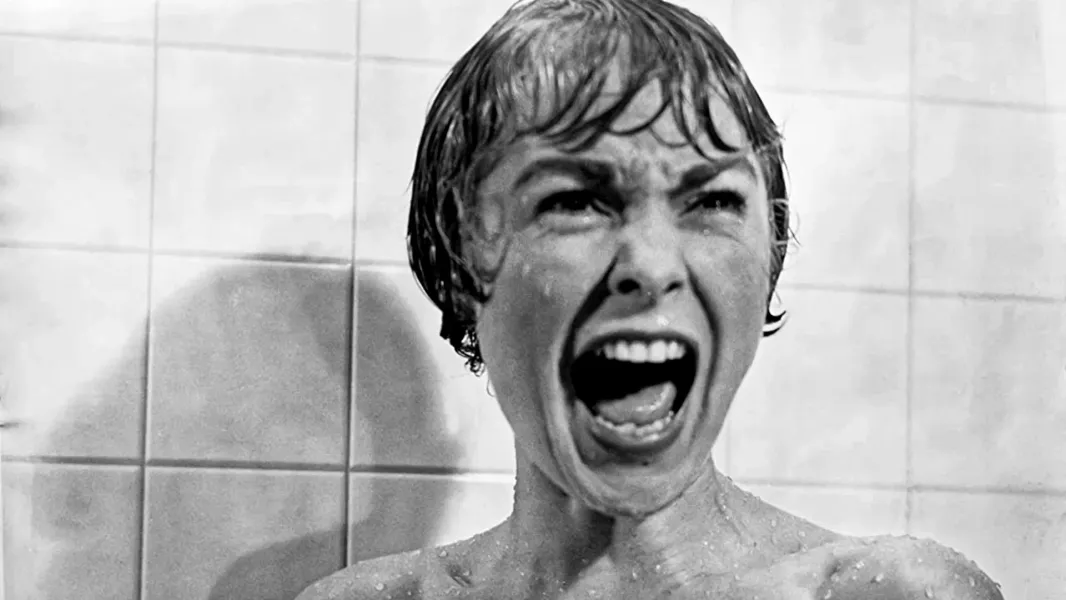
Alfred Hitchcock’s 1960 psychological thriller “Psycho” is widely regarded as a cinematic masterpiece that forever changed the landscape of the horror genre. Released at a time when the Motion Picture Production Code still heavily censored the content of American films, “Psycho” brazenly challenged the status quo, pushing the boundaries of what was considered acceptable on the silver screen.
Defying Conventions: The Daring Approach of “Psycho”
From the very first scene, “Psycho” subverted the traditional Hollywood narrative structure. Rather than opening with an establishing shot or a clear protagonist, the film plunges the audience directly into a casual sexual encounter between Marion Crane (Janet Leigh) and her lover, Sam Loomis (John Gavin). This bold choice immediately set the tone for a film that would defy audience expectations at every turn.
Hitchcock’s disregard for the Production Code’s restrictions was further evident in the film’s infamous shower scene, which depicted the brutal murder of Marion Crane in graphic detail. The director’s innovative use of editing, camera angles, and Bernard Herrmann’s iconic score created a sequence that is widely regarded as one of the most iconic and influential in cinematic history. By pushing the boundaries of what was considered acceptable, “Psycho” marked a significant turning point in the decline of the Production Code and the rise of a new era of filmmaking.
The Genius of Anthony Perkins as Norman Bates
At the heart of “Psycho” is the character of Norman Bates, played with remarkable nuance by Anthony Perkins. Perkins, who was known at the time as a “golden boy” of Hollywood, delivered a performance that subverted audience expectations and cemented his place as one of the most iconic villains in cinema.
Perkins’ portrayal of Norman Bates was a masterclass in subtlety and complexity. Rather than presenting the character as a one-dimensional psychopath, Perkins imbued him with a sense of vulnerability and humanity that made his descent into madness all the more chilling. The actor’s ability to seamlessly transition between Norman’s charming, boyish demeanor and his darker, more disturbed persona was a testament to his remarkable talent.
The success of Perkins’ performance was further enhanced by Hitchcock’s decision to cast him against type. Perkins was known at the time as a “golden boy” of Hollywood, making his transformation into one of the most iconic villains in cinema history all the more impactful. This subversion of audience expectations was a hallmark of Hitchcock’s filmmaking, and it played a crucial role in the enduring legacy of “Psycho.”
The Importance of Cinematography and Symbolism
In addition to its groundbreaking narrative and performances, “Psycho” is also renowned for its exceptional cinematography and use of symbolism. Hitchcock’s decision to shoot the film in black and white was not only a practical one (to save on production costs and avoid issues with the censors), but it also served to heighten the film’s sense of unease and tension.
The stark, high-contrast visuals created by cinematographer John Russell lent the film a sense of gritty realism, while also allowing Hitchcock to play with shadows and light to create a pervasive atmosphere of dread and suspense.
The use of the 50mm lens, which brought the audience closer to the characters, further enhanced the film’s sense of intimacy and claustrophobia.
Hitchcock also incorporated a wealth of symbolic imagery throughout the film, from the recurring motif of birds to the significance of the mirror in Marion’s character arc.
These visual elements, combined with Bernard Herrmann’s iconic score, worked in perfect harmony to create a cinematic experience that was both deeply unsettling and profoundly memorable. Herrmann’s score was a crucial component of the film’s success, with the director himself acknowledging the composer’s vital contribution to the overall impact of “Psycho.”
The Enduring Legacy of “Psycho”
In the decades since its release, “Psycho” has cemented its status as a true masterpiece of cinema, influencing countless filmmakers and leaving an indelible mark on the horror genre. The film’s innovative approach to storytelling, its groundbreaking visual style, and its unforgettable performances have all contributed to its enduring legacy.
“Psycho” was a critical and commercial success upon its release, earning Hitchcock a substantial financial windfall and cementing his reputation as one of the greatest directors of all time. However, the film’s impact extended far beyond its immediate success, as it challenged the conventions of the Hollywood studio system and paved the way for a new era of filmmaking.
There is an ongoing critical debate surrounding the film, with some contemporary critics arguing that the film’s final act, in which the audience is provided with a detailed explanation of Norman Bates’ motivations, is a weakness. However, this criticism fails to take into account the historical context in which the film was made.
In 1960, the idea of leaving a film’s ending ambiguous or open-ended was still a relatively radical concept. Hitchcock, who was working within the constraints of the Production Code, needed to provide a clear resolution to the film’s central mystery in order to satisfy the expectations of his audience. The fact that he was able to do so in a way that was both satisfying and thought-provoking is a testament to his skill as a filmmaker.
Today, “Psycho” is widely regarded as a masterpiece of the horror genre, and its influence can be seen in countless films, television shows, and other works of popular culture. From its iconic shower scene to its unforgettable twist ending, the film has become a cultural touchstone, inspiring countless homages, parodies, and reimaginings.
For those interested in delving deeper into the history and legacy of “Psycho,” there are several recommended readings, including Stephen Rebello’s “Alfred Hitchcock and the Making of Psycho,” Robert Bloch’s novel “Psycho,” and the classic interview collection “Hitchcock/Truffaut.” These resources offer a wealth of insight and analysis into the film’s production, its cultural impact, and its enduring significance in the annals of cinema.
Conclusion
In the end, “Psycho” stands as a testament to the power of bold, innovative filmmaking. Hitchcock’s willingness to challenge the status quo, push the boundaries of what was considered acceptable, and create a work of art that has endured for over six decades is a testament to his genius as a director. Through its groundbreaking narrative, its exceptional performances, and its visually stunning cinematography, “Psycho” has cemented its place as one of the most influential and iconic films in the history of cinema.



